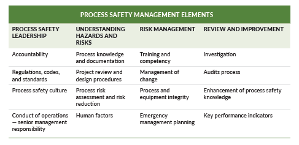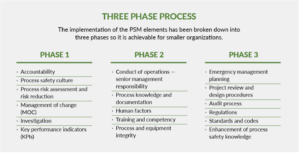Around the world, process safety management (PSM) is becoming central to worker safety and managing risk. PSM implementation protects personnel, equipment, and production uptime, and is associated with lower maintenance cost, insurance and capital.
The industry is currently implement PSM through a strategic long-term plan, using the CSA Z767 Process Safety Management standard as the framework. It is anticipated the initiative will be a core focus of the WPAC Safety Committee Workplan until 2028-2030. Return to this page often for updated information.

PSM implementation continues our sector’s commitment to constant improvement and sharing learning. Safety experts will do most of the hands-on work and will be guided by a steering committee.

Read report: Integrating Process Safety Management into Canadian Wood Pellet Facilities that Generate Combustible Wood Dust
View presentation: PSM Implementation: Research Outcomes and Next Steps
Self-Assessments and Action Plans have been developed for the 16 elements of PSM.
One of the initial steps in process safety management (PSM) implementation is to complete a qualitative gap analysis against the PSM standard (in this case, the CSA Z767 standard). To perform this gap analysis, PSM self-assessment and action plan worksheets are being developed for the 16 elements of PSM. They will be added here once finalized.
Visit the individual PSM Element pages below to utilize the Self-Assessments and Action Plans as well as resources and best practices related to each element.
Phase 1
- Accountability
- Investigation
- Key Performance Indicators (KPIs)
- Management of Change (MOC)
- Process Safety Culture
- Risk Assessment
Read: How to Use PSM Self-Assessment & Action Plans
This project was funded by WorkSafeBC under an Innovation at Work grant. The views, findings, opinions, and conclusions expressed herein do not represent the views of WorkSafeBC.
